We may receive a commission when you use our affiliate links. However, this does not impact our recommendations.
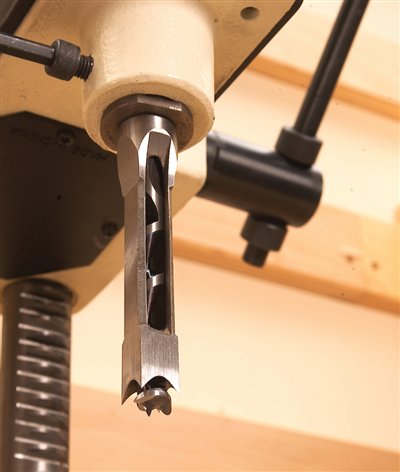
Master Your Mortiser
Shop-tested techniques
guarantee great results.
By George Vondriska
The first time I used my benchtop mortiser was almost
my last. It was tedious to set up, difficult to operate and
my results stunk. But now the mortiser is my first
choice whenever I have mortises to cut. It turns out the problem
wasn’t the machine—in fact, the newest benchtop mortisers
do a great job. Instead, the problem was
my inexperience. I discovered there’s a learning curve to
successfully setting up and operating a mortiser.Read on to learn the techniques I use to get
consistent, professional-quality results from my
mortiser. If you follow these methods and
mortising is still a struggle, your
machine’s fence and hold-down may
need tuning. |
|
Click any image to view a larger version.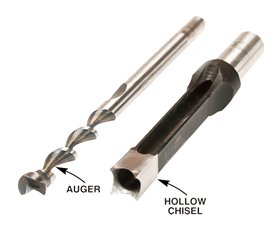
The hollow chisel and auger
bit work together to cut
square mortises. The auger
drills a hole and then the chisel squares the corners.
Chips produced while cutting are lifted by the auger and ejected
through holes in the chisel. |
Start sharp, stay sharp
You’ll get better results with less effort
if you take a few minutes to sharpen
your bit and chisel before each use.
Sharpen the auger’s flutes with a small
auger file (this one’s from Nicholson’s
miniature file set #42030, about $17 at
Amazon.com). An auger file has
smooth edges that won’t harm adjacent
surfaces during close work. Hold
the file flat on the bevel and move it
forward only, toward the cutting edge. |
|
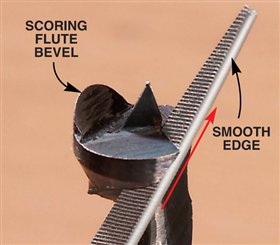 |
Sharpen the chisel’s inside bevels with
a round slipstone (about $15 at woodworking
specialty stores). |
|
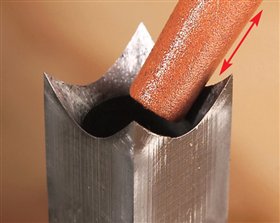 |
Hone the outside faces on a flat stone,
using even pressure and a circular
motion. |
|
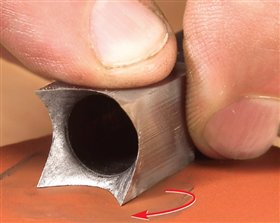 |
________________________________________________________________________________________
Insert a dime to install the bits. To work properly, the auger must slightly
project beyond the hollow chisel. Here’s an
easy way to achieve the perfect projection.
Temporarily install the chisel with a dime
squeezed between its shoulder and the
machine. Then lock the auger in position with
the edge of its cutting flute even with the
chisel’s tips. Remove the dime, slide the chisel’s
collar tight to the machine and lock it. |
|
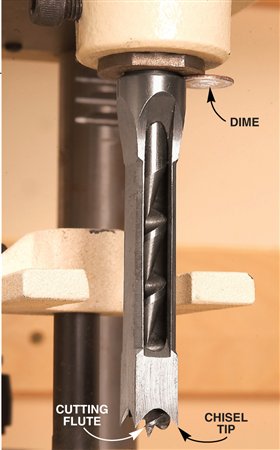 |
Instantly align the chisel. To create perfect mortises,
the chisel must be parallel to
the fence. It’s easiest to place
a board against the fence,
move the fence forward and
pivot the chisel until its face
is flush with the board. |
|
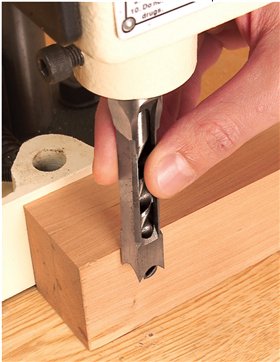 |
Arches set the depth of cut. Mark the tenon’s length on the
end of the workpiece. Then
lower the chisel. Lock the
depth-of-cut stop when the
tops of the chisel’s arches are
even with your line. This
method assures that your
tenons will seat properly,
because it automatically creates
a mortise that’s slightly
deeper than the tenon’s length. |
|
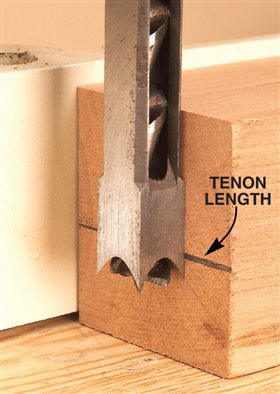 |
Stay cool. Make life easier for the chisel and auger
by spritzing them with cutting lubricant
before each use. This prevents overheating,
helps the auger to evacuate
chips effectively and allows the chisel to
smoothly enter and exit the workpiece.
It’ll also help your ears; lubricating
keeps the bits from squealing.
Source
Empire Manufacturing, empiremfg.com, 866-700-5823, OptiCut XL,
$6 for a 2-ounce bottle. |
|
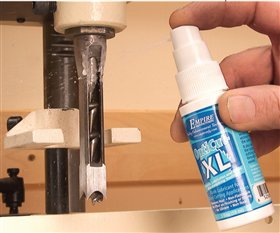 |
Let the chisel & auger do the work.
Synchronize your feed rate with the auger’s cutting action
by watching the flow of chips exiting the chisel.
Don’t try to overpower the machine; easy—but firmly—does it.
Connect square holes to create a mortise. Establish the ends of the mortise first. Then clear out the middle: First cut individual holes spaced by slightly less than
the width of the chisel. Then go back and remove the remaining
bridges. Always engage the chisel on all four sides or on
two opposite sides, but never on three sides. Engaging three
sides can deflect—and even break—the chisel. |
|
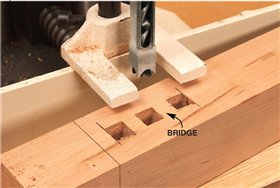 |
Make a cleaning pass. The first set of holes you cut will leave considerable
debris in the bottom of the mortise. The mortise sides
may also be slightly rough. A second pass, made with
numerous plunges very close together, cleans both
the bottom of the mortise and the sides. |
|
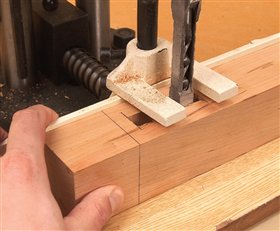 |
Mortise before cutting to length. When a mortise starts near the
end of a piece, as on the table
leg shown here, leave the piece
long until after the mortise is cut.
Then you’ll always have material
under both arms of the holddown.
This greatly reduces the
chances of jamming the chisel. |
|
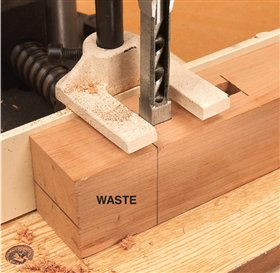 |
Cut through mortises from the visible face. Only one side of a through mortise shows, so
it only needs one perfect face. Cut these mortises
with the most visible face up—this side
will be cleanly cut. Support the exit side with
a scrap piece to reduce splintering. To keep
the bit from wandering or overheating, cut
the mortise in stages, halfway first, then all
the way through. |
|
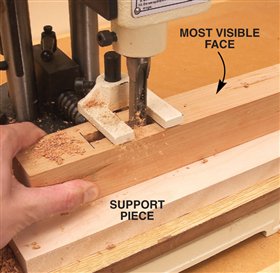 |
Let the grooves be your guide. When you use mortises and
tenons to join rails and stiles on
frame and panel constructions,
cut the grooves for the panel
first. Then use the grooves to set
up and guide the mortising chisel
when you cut the mortises. |
|
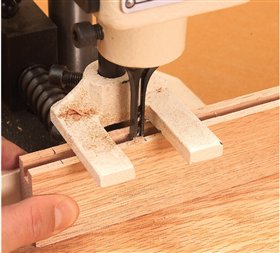 |
Product Recommendations
Here are some supplies and tools we find essential in our everyday work around the shop. We may receive a commission from sales referred by our links; however, we have carefully selected these products for their usefulness and quality.





















